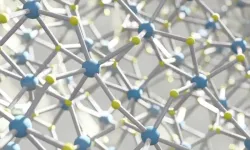(Press-News.org) Motion capture technology has applications in a wide range of fields, including entertainment, medicine, and sports, to name a few. But what if the measurements these systems were based on were rooted in social practices and biased assumptions, leading to errors that become ingrained over time?
This question is at the heart of new research co-authored by Mona Sloane, an assistant professor of data science and media studies at the University of Virginia.
Sloane and her co-authors — Abigal Jacobs, an assistant professor of information at the University of Michigan; Emanuel Moss, a research scientist at Intel Labs; Emma Harvey, a doctoral student at Cornell’s School of Information Science; and Hauke Sandhaus, a doctoral student at Cornell Tech — use social practice theory as a lens to examine how certain assumptions have become embedded in the design and innovation of motion capture technology through the decades.
Social practice theory, the paper explains, looks at behaviors that can be seen across communities throughout different periods of time, rather than focusing narrowly on an object or individual as a unit of inquiry. This approach allows researchers to uncover the assumptions that are built into technological systems, which can, potentially, reveal the harms these systems could cause.
Sloane and her collaborators conducted a systematic literature review of 278 papers pertaining to motion capture research. They divide this literature into three eras: Foundation, 1930-79; Standardization, 1980-99; and Innovation, 2000-present.
Within those three eras, the authors identify six types of errors — which, they argue, provide critical insights into motion capture practices across the different time periods.
For example, in the first era — where works focused on measuring the human body, which helped lay the foundation for motion capture technology — the analysis cited one study that aimed to identify the ideal design of a cockpit. To do so, the study’s author used the body segment parameters of eight older, white male cadavers, and the resulting measurements soon emerged as the accepted benchmarks used by the U.S. Air Force.
Errors in the measurement of the human body, or anthropometric errors, were common in the Foundation era, the authors find. In the most recent era, errors pertaining to the algorithms used to analyze data are prevalent.
Categorizing and understanding the implications of these errors, and the assumptions they are based on, could have a profound impact on technology and society, the authors contend. For instance, car safety features that were implemented based on crash test dummies designed to resemble an average male body have resulted in higher injury rates for females. This is just one example of insufficient subgroup validity testing leading to harmful outcomes that the paper highlights.
Through their analysis, Sloane and her co-authors devise a template for future research on social practice in the design and use of technologies and also illuminate the poor foundations on which modern motion capture systems have, at times, been built. Their findings point to the many ways in which assumptions have carried across different historical eras, becoming part of the infrastructure of some modern technological systems.
This research is part of a larger project Sloane is leading with Jacobs and Moss on developing artificial intelligence audit techniques for hardware- and sensor-driven systems, research funded by IBM and the University of Notre Dame. This paper was in the top 1% of more than 3,000 papers accepted by the Association of Computing Machinery's CHI 2024 conference, which indicates that at least three of the four members of the review panel supported its acceptance.
Sloane joined the faculty of UVA in fall 2023. She holds a dual appointment with the University’s School of Data Science and the Department of Media Studies.
At UVA, Sloane runs Sloane Lab, which conducts empirical research on the implications of technology for the organization of social life. Its focus lies on AI as a social phenomenon that intersects with wider cultural, economic, material, and political conditions. The lab spearheads social science leadership in applied work on responsible AI, public scholarship, and technology policy.
For more information about Sloane’s research visit monasloane.org.
END
New research examines how assumptions affect motion capture technology
2024-01-22
ELSE PRESS RELEASES FROM THIS DATE:
Scientists identify mutations that cause inherited kidney disease
2024-01-22
Genetic changes or mutations can cause hereditary kidney disease, which can eventually lead to dialysis or the need for kidney transplantation. Identifying the cause of inherited kidney disease is the first step in identifying a treatment.
With that goal in mind, researchers at Wake Forest University School of Medicine and the First Faculty of Medicine of Charles University in Prague, Czech Republic, have discovered a new genetic cause of inherited kidney disease.
The findings were recently published in Kidney International.
According to Anthony J. Bleyer, M.D., ...
How the brain responds to reward is linked to socioeconomic background
2024-01-22
MIT neuroscientists have found that the brain’s sensitivity to rewarding experiences — a critical factor in motivation and attention — can be shaped by socioeconomic conditions.
In a study of 12 to 14-year-olds whose socioeconomic status (SES) varied widely, the researchers found that children from lower SES backgrounds showed less sensitivity to reward than those from more affluent backgrounds.
Using functional magnetic resonance imaging (fMRI), the research team measured brain activity as the children played a guessing game in which they earned extra money for each correct ...
New reagent improves the process of making sulfur-containing compounds that may be used in medicines
2024-01-22
During the past decade, there has been significant development of new sulfur containing compounds that are used in various industries, including pharmaceuticals and agricultural products. Sulfoximines, sulfonimidoyl fluorides and sulfonimidamides are types of sulfur-containing chemical compounds that have wide-ranging potential as therapeutic drugs. However, the synthesis process for these compounds is complex and has several limitations. In a new article published in Nature Chemistry, Moffitt Cancer Center researchers describe their ...
New candidate for universal memory is fast, low-power, stable and long-lasting
2024-01-22
We are tasking our computers with processing ever-increasing amounts of data to speed up drug discovery, improve weather and climate predictions, train artificial intelligence, and much more. To keep up with this demand, we need faster, more energy-efficient computer memory than ever before.
Researchers at Stanford have demonstrated that a new material may make phase-change memory—which relies on switching between high and low resistance states to create the ones and zeroes of computer data—an improved option for future AI and data-centric systems. ...
Follow the salt: connecting salt concentrations and motion in roundworms
2024-01-22
Joint research led by Ayaka Matsumoto and Yuichi Iino of the University of Tokyo demonstrated that temporal decrease in salt concentration leads to the activation of the neck motor neuron of roundworms only in a specific phase of its activity. The activation adjusts the roundworm's trajectory toward higher salt concentrations. The finding pinpoints the neural mechanism by which roundworms integrate sensory and motor information, a first step toward understanding the neural mechanisms of navigation in more complex animals. The findings were published in the journal Proceedings ...
Planetary Commons: Fostering global cooperation to safeguard critical Earth system functions
2024-01-22
“Stability and wealth of nations and our civilisation depends on the stability of critical Earth system functions that operate beyond national borders. At the same time, human activities push harder and harder on the planetary boundaries of these pivotal systems. From the Amazon rainforest to the Greenland ice masses, there are rising risks of triggering irreversible and unmanageable shifts in Earth system functioning. As these shifts affect people across the globe, we argue that tipping elements should be ...
Manipulated hafnia paves the way for next-gen memory devices
2024-01-22
EMBARGOED: NOT FOR RELEASE UNTIL 3:00 P.M. U.S. EASTERN TIME ON JANUARY 22, 2024
Scientists and engineers have been pushing for the past decade to leverage an elusive ferroelectric material called hafnium oxide, or hafnia, to usher in the next generation of computing memory. A team of researchers including the University of Rochester’s Sobhit Singh published a Proceedings of the National Academy of Sciences study outlining progress toward making bulk ferroelectric and antiferroelectric hafnia available for use in a variety of applications.
In a specific crystal phase, hafnia exhibits ferroelectric properties—that is, electric polarization that can be changed in one direction ...
Optical computing boost with diffractive network advance
2024-01-22
State-of-the-art neural networks heavily rely on linear operations, such as matrix-vector multiplications and convolutions. While dedicated processors like GPUs and TPUs exist for these operations, they have limitations in terms of power consumption and bandwidth. Optics is better suited for such operations because of its inherent parallelism, large bandwidth, and computation speed.
Diffractive deep neural networks (D2NN), also known as diffractive networks, constitute an emerging optical computing architecture. ...
Wake Forest Institute for Regenerative Medicine (WFIRM) to lead $40 Million initiative for AFIRM Consortium
2024-01-22
Winston Salem, NC – January 22, 2024 - The Wake Forest Institute for Regenerative Medicine, part of Wake Forest University School of Medicine, has been selected to lead the Armed Forces Institute of Regenerative Medicine (AFIRM) Consortium. The project - a $40 million, five year-long award from the Defense Health Agency (DHA) - will focus on taking regenerative medicine solutions for battlefield injuries to the next level, and ultimately to the general public.
Regenerative medicine is a science that takes advantage of the body's natural abilities to restore or replace damaged tissue and organs. WFIRM has managed two prior AFIRM consortia since ...
Argonne National Laboratory flexes capabilities with receipt of four nuclear innovation vouchers
2024-01-22
A decade that began with a global shutdown is a third of the way done. Its finale — a major deadline for reducing U.S. carbon emissions to slow climate change — approaches at the usual clip. With the decade’s halfway mark in view, the U.S. Department of Energy (DOE) Gateway for Accelerated Innovation in Nuclear (GAIN) awarded seven new vouchers to companies and national laboratories working to develop and commercialize clean nuclear energy projects. Nuclear energy is considered central to efforts to minimize carbon emissions and still reliably meet rising ...



